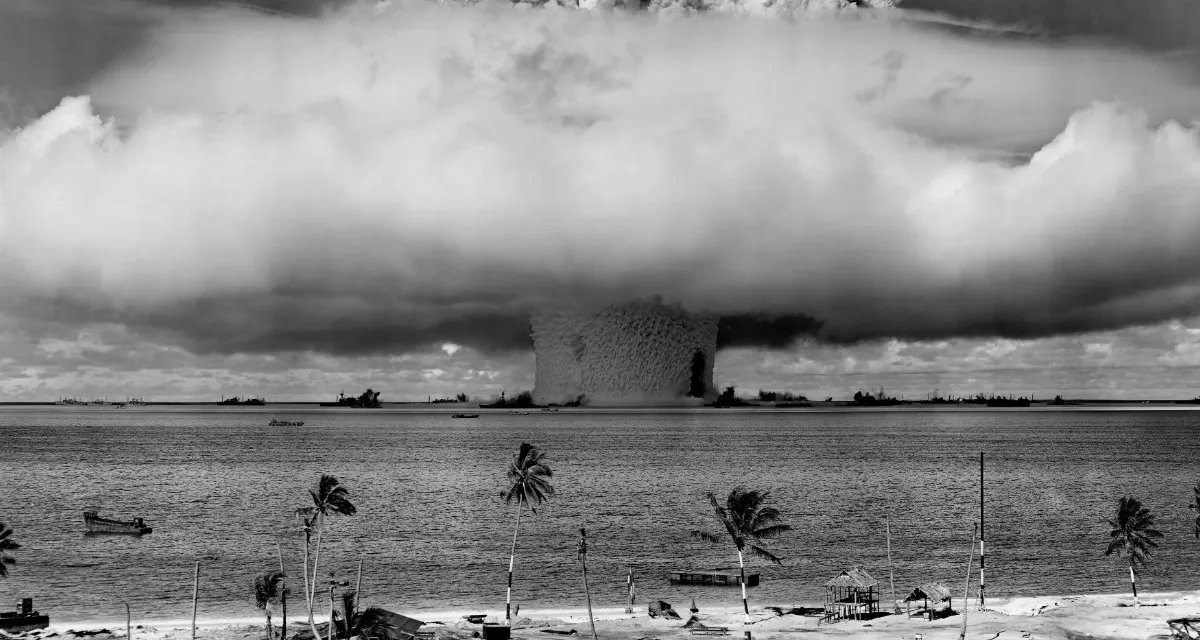Trapped in Shadows: The Psychological Grip of Isolation
Isolation is a recurring theme in American Gothic, offering a stark exploration of psychological depth and alienation. This theme manifests in various ways, from physical seclusion to mental estrangement, and serves as a conduit for examining the complexities of the human condition.
1. Unveiling Isolation in Gothic Narratives
American Gothic often places its characters in isolation, both physically and psychologically. The solitary settings—such as deserted farmhouses, lonely hilltop manors, or fog-shrouded swamps—intensify the characters' sense of vulnerability. This isolation isn't just a state of being alone; it becomes a profound psychological experience. Characters find themselves cut off from the stability of society, confronting both external threats and internal demons.
This table highlights how isolation serves as a catalyst for psychological tension. In these settings, alienation becomes a breeding ground for fear and suspense, essential elements in weaving the haunting atmosphere inherent to American Gothic. Such narratives don't just thrive on conventional horror elements; they delve deep into the human psyche, exploring the interplay of fear, anxiety, and the subconscious.
2. Isolation's Psychological Impact
The profound isolation depicted in American Gothic literature gives rise to a host of psychological complexities. Characters often grapple with paranoia, existential uncertainty, and the erosion of their mental faculties. The absence of community and companionship amplifies these internal struggles, leading characters down paths of introspection and madness.
This psychological isolation is not merely for effect. It reflects broader existential themes, mirroring societal issues such as alienation and identity crises. A character isolated in a remote setting may become an allegory for the disconnect felt in modern society, where individuals often face overwhelming societal shifts and personal expectations without adequate support systems.
3. Characters as Reflections of Societal Anxieties
American Gothic's emphasis on isolated characters provides an avenue to explore societal anxieties. These stories often reflect on personal and collective fears about alienation, identity, and the tenuous nature of sanity. Whether through a recluse hiding from a haunting guilt or a community ostracizing a misunderstood individual, these narratives explore the effects of isolation on human consciousness.
Characters in American Gothic tales become conduits through which the anxieties of the time are explored. The isolation they experience mirrors a society grappling with rapid changes and unsettling realities. The genre's compelling depiction of isolation invites readers to confront their fears, fostering a deeper understanding of the human experience in its darkest and most vulnerable states.
Eerie Landscapes: Isolation and Mystery
The landscapes of American Gothic are not mere settings but active participants that shape the narrative and amplify the themes of isolation and dread. They contribute to the creation of an atmosphere rich with mystery and reflection.
1. The Influence of the Landscape
American Gothic landscapes are meticulously crafted to evoke a sense of unease and mystery. These settings—characterized by their vast, desolate spaces, oppressive forests, and decaying architecture—play a crucial role in shaping the characters' experiences. They reflect the externalization of the characters' fears and insecurities, creating an immersive experience that draws readers into a world where the environment itself is both ominous and reflective of inner turmoil.
The landscapes not only isolate characters physically but also psychologically, as they navigate the alien terrain of their minds. This interplay between the landscape and the narrative deepens the thematic exploration, weaving a tapestry where geography and psyche are inextricably intertwined. The surroundings become a mirror of the characters' internal struggles, suggesting that their battles are both within and around them.
2. Mysteries of the Land
The mysterious landscapes in American Gothic stories are often shrouded in secrets, waiting to be uncovered. These settings harbor a multitude of mysteries—old family secrets, forgotten histories, and unsolved crimes become woven into the fabric of the land itself. As characters explore these eerie locales, they are drawn deeper into the mysteries, uncovering truths that challenge their perceptions of reality and self.
Such exploration parallels the characters' internal journeys, marking a transition from fear of the unknown to a confrontation with deep-seated truths. The landscapes serve as both a catalyst and a backdrop for this discovery, emphasizing the connection between the environment and the narrative's psychological and existential themes.
3. Landscapes as Symbols of Inner Conflict
In American Gothic, landscapes often symbolize the internal conflicts faced by the characters. The sprawling, enigmatic settings—whether they be dark woods, endless fields, or storm-battered coastlines—act as metaphors for the characters' tumultuous emotions. These natural elements, steeped in mystery and foreboding, become reflections of the characters' inner worlds.
The power of these landscapes lies in their ambiguity and transformation. They represent the duality of human nature, the battle between light and darkness, and the ongoing struggle for understanding and reconciliation. Through these symbolic environments, American Gothic creates a rich tapestry that challenges characters and readers alike to confront their internal conflicts within the grand, haunting canvas of the world.
Decay and Depth: The Timeless Haunt
The enduring attraction of American Gothic derives from its exploration of themes surrounding decay, both physical and moral. These elements serve to delve into the intricate depths of human nature and societal constructs.
1. The Symbolism of Decay
American Gothic literature frequently uses themes of decay to evoke a sense of loss and the inevitable passage of time. Crumbling buildings, deteriorating landscapes, and forgotten monuments are not merely setting elements but symbols of the gradual degradation of human aspirations and moral structures. They ground the genre's exploration of decline and transience, bringing a profound sense of melancholic beauty and introspection.
This decay isn't just confined to the physical realm. It extends into the moral and ethical spheres, questioning the integrity of values and institutions. The decay serves to unravel layers of societal facade, revealing the corruption and moral ambiguity hidden beneath. Such introspection opens pathways for a critical examination of contemporary societal structures and individual morality.
2. Psychological Exploration of Decay
Beyond the physical decay, American Gothic delves into the psychological implications of deterioration. The genre examines how the decline seeps into the human psyche, manifesting as obsession, guilt, and fear. These psychological aspects of decay act as mirrors to the readers, reflecting innate vulnerabilities and universal concerns about mortality and moral failures.
Characters might be depicted as succumbing to the internal rot of guilt, regret, or madness, leading to a rich narrative texture that explores the tenuous balance between sanity and insanity. In doing so, American Gothic invites introspection into the darker recesses of the human mind, posing existential questions about identity and the human condition.
3. Decay as Reflection of Societal Shifts
The themes of decay in American Gothic are not merely explorations of individual or physical decline; they often serve as metaphors for broader societal shifts. The genre reflects the cultural anxieties surrounding change, corruption, and the fragility of established norms. Through its exploration of decay, American Gothic identifies and critiques the underlying tensions and transformations within society.
By presenting decay as both inevitable and unsettling, these narratives encourage readers to reflect on their relationship with change, tradition, and progress. The dialogue between the past and present, amplified by these narratives, challenges audiences to reconcile with the ever-present hauntings of history and the universal struggle against the decay of both the physical and the moral.
Through its rich tapestry of themes and symbols, American Gothic continues to engage and resonate with audiences, ensuring its place as a timeless exploration of the darker dimensions of the human experience and the societal landscape.
Q&A
-
What elements contribute to the atmosphere of horror in a story?
The atmosphere of horror in a story is often created through a combination of isolation, decay, and mystery. Isolation amplifies fear by removing characters from their comfort zones, forcing them to face the unknown alone. Decay, whether physical or moral, evokes a sense of unease and deterioration. Mystery adds layers of intrigue and suspense, keeping readers on edge as they try to unravel the story's secrets.
-
How does isolation enhance the psychological depth of a horror narrative?
Isolation in horror narratives intensifies psychological depth by placing characters in situations where they must confront their innermost fears and insecurities without external support. This solitude often leads to introspection, revealing complex psychological layers and vulnerabilities that heighten the tension and emotional impact of the story.
-
In what ways does decay serve as a metaphor in supernatural horror stories?
Decay in supernatural horror stories often symbolizes the breakdown of order and the encroachment of chaos. It can represent the disintegration of reality, morality, or even sanity, reflecting the pervasive influence of malevolent supernatural forces. This metaphorical use of decay underscores the inevitable decline and transformation that characters may experience as they confront otherworldly entities.
-
Why is mystery a critical component in psychological horror?
Mystery is crucial in psychological horror because it engages the audience's curiosity and imagination, leading them to question what is real and what is imagined. It creates an atmosphere of uncertainty and suspense, which can amplify feelings of paranoia and fear. By withholding certain information, mystery allows for deeper exploration of the characters' psyches and the dark secrets they may harbor.
-
How can supernatural elements be used to explore psychological themes in horror?
Supernatural elements in horror can serve as external manifestations of internal psychological conflicts. For instance, a haunting might symbolize unresolved guilt or trauma, while a cursed object could represent the consequences of past actions. By blending the supernatural with psychological themes, horror stories can delve into complex human emotions and the impact of the unconscious mind on behavior.








